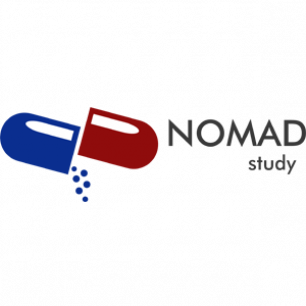

There are growing efforts by pharmaceutical companies to develop opioid formulations that are less prone to misuse (particularly injection), dependence and diversion to illicit markets. In Australia, the semi-synthetic opioid agonist oxycodone is available in eight different products, the most frequently prescribed controlled release formulation being OxyContin®. An “abuse-deterrent” (or “tamper-resistant”) formulation of OxyContin® tablets was introduced onto the Australian market in April 2014.
This project will examine the level of extra-medical use of oxycodone in Australia and how it compares to extra-medical use of other opioids; whether there is less non-medical use of Reformulated OxyContin®; how pharmaceutical opioid use changes following the introduction of new opioid formulations to the market; and long term outcomes for regular non-medical users of pharmaceutical opioids.
Dr Raimondo Bruno
School of Psychology, University of Tasmania
Associate Professor Robert Ali
School of Medical Sciences, University of Adelaide
Associate Professor Nicholas Lintzeris
The Langton Centre, SE Sydney Local Health District Drug and Alcohol Services; and University of Sydney
Dr Apo Demirkol
The Langton Centre; and University of Sydney
Associate Professor Adrian Dunlop
Hunter New England Local Health District
Professor Paul Haber
Royal Prince Alfred Hospital; University of Sydney
Amy Peacock
University of Tasmania
Dr Nghi Phung
South Western Sydney Local Health District
Dr Nancy White
School of Medical Sciences, University of Adelaide
Over the past decade, there has been increasing professional and public concern in a number of countries about pharmaceutical opioid use and related harms. This has been driven by increases in prescribing of these drugs. Between 1992-2007, the number of opioid prescriptions in Australia increased by around 300%. This increase in prescribing has been accompanied by increases in injection of some opioids by people who inject drugs; and increased concern about the appropriateness of prescribing these drugs for chronic non-cancer pain (CNCP). The use of opioids outside the bounds of a doctor’s prescription has been cause for concern because of the risk of iatrogenic dependence, and serious adverse events including opioid overdose.
Specific research questions include:
- What is the level of extra-medical use of oxycodone formulations in Australia?
- How does extra-medical use of oxycodone compare to that of other opioids?
- Is there less extra-medical use of abuse-deterrent opioids among regular pharmaceutical opioid users?
- Do the individual patterns of pharmaceutical opioid use change following the introduction of new opioid formulations to the market?
- Are tamper-resistant/abuse-deterrent formulation less attractive in the illicit market?
- What are the long-term clinical outcomes among a group of regular pharmaceutical opioid users who report extra-medical use?
Aside from making comparisons between the old and new formulations of oxycodone, comparisons will also be made between other Schedule 8 opioids (including morphine, fentanyl, buprenorphine, methadone, tramadol, etc.).
- Analyses of existing routine data sources, including sales and prescription data;
- Analyses of existing data from interviews with people who inject drugs regularly (NDARC's Illicit Drug Reporting System (IDRS));
- A longitudinal cohort study of people who regularly misuse or tamper with pharmaceutical opioids who will be interviewed prior to the introduction of the new OxyContin® formulation, then 3 and 12 months post-release; and
- Data linkage of longitudinal cohort participants (from #3), who will be asked to consent to linkage of their details with routine administrative data to examine outcomes such as opioid substitution therapy (OST) entry, hospital separations, prescriptions, health service utilisation, emergency department attendances, crime and mortality.
Data collection for the baseline and wave 2 assessment of the cohort is complete. Early findings have indicated that there has been a decline in national pharmacy sales of 80mg OxyContin® (the dose most commonly used and injected among people who inject drugs) since the introduction of the reformulation, as well as a reduction in prevalence of overall use and injection, street price and attractiveness for misuse via tampering. Data collection for wave 3 assessment for the cohort and data linkage is currently underway.
Publications that have arisen from this study are detailed below. Several manuscripts are currently being prepared for publication in peer-reviewed journals.
Degenhardt, L., Bruno, R., Ali, R., Lintzeris, N., Farrell, M., & Larance, B. (2015). The introduction of a potentially abuse deterrent oxycodone formulation: Early findings from the Australian National Opioid Medications Abuse Deterrence (NOMAD) study. Drug and Alcohol Dependence, 151, 56-67. http://dx.doi.org/10.1016/j.drugalcdep.2015.02.038
Degenhardt, L., Larance, B., Bruno, R., Lintzeris, N., Ali, R., & Farrell, M. (2015). Evaluating the potential impact of a reformulated version of oxycodone upon tampering, non-adherence and diversion of opioids: the National Opioid Medications Abuse Deterrence (NOMAD) study protocol. Addiction, 110, 226-237. http://dx.doi.org/10.1111/add.12746
Larance, B., Lintzeris, N., Bruno, R., Peacock, A., Cama, E., Ali, R., Kihas, I., Hordern, A., White, N., & Degenhardt, L. The characteristics of a cohort who tamper with prescribed and diverted opioid medications. Journal of Substance Abuse Treatment, accepted June 2015.
Peacock, A., Bruno, R., Cama, E., Kihas, I., Larance, B., Lintzeris, N., Hordern, A., White, N., Ali, R., & Degenhardt, L. (2015). Jurisdictional differences in opioid use, other licit and illicit drug use, and harms associated with substance use among people who tamper with pharmaceutical opioids. Drug and Alcohol Review, advance online publication. http://dx.doi.org/10.1111/dar.12279
Peacock, A., Degenhardt, L., Hordern, A., Larance, B., Cama, E., White, N., Kihas, I., & Bruno, R. Methods and predictors of tampering with a tamper-resistant controlled-release oxycodone formulation. International Journal of Drug Policy, accepted May 2015.
This study will provide novel data on the potential impact of formulations of opioids that are designed to deter tampering.







